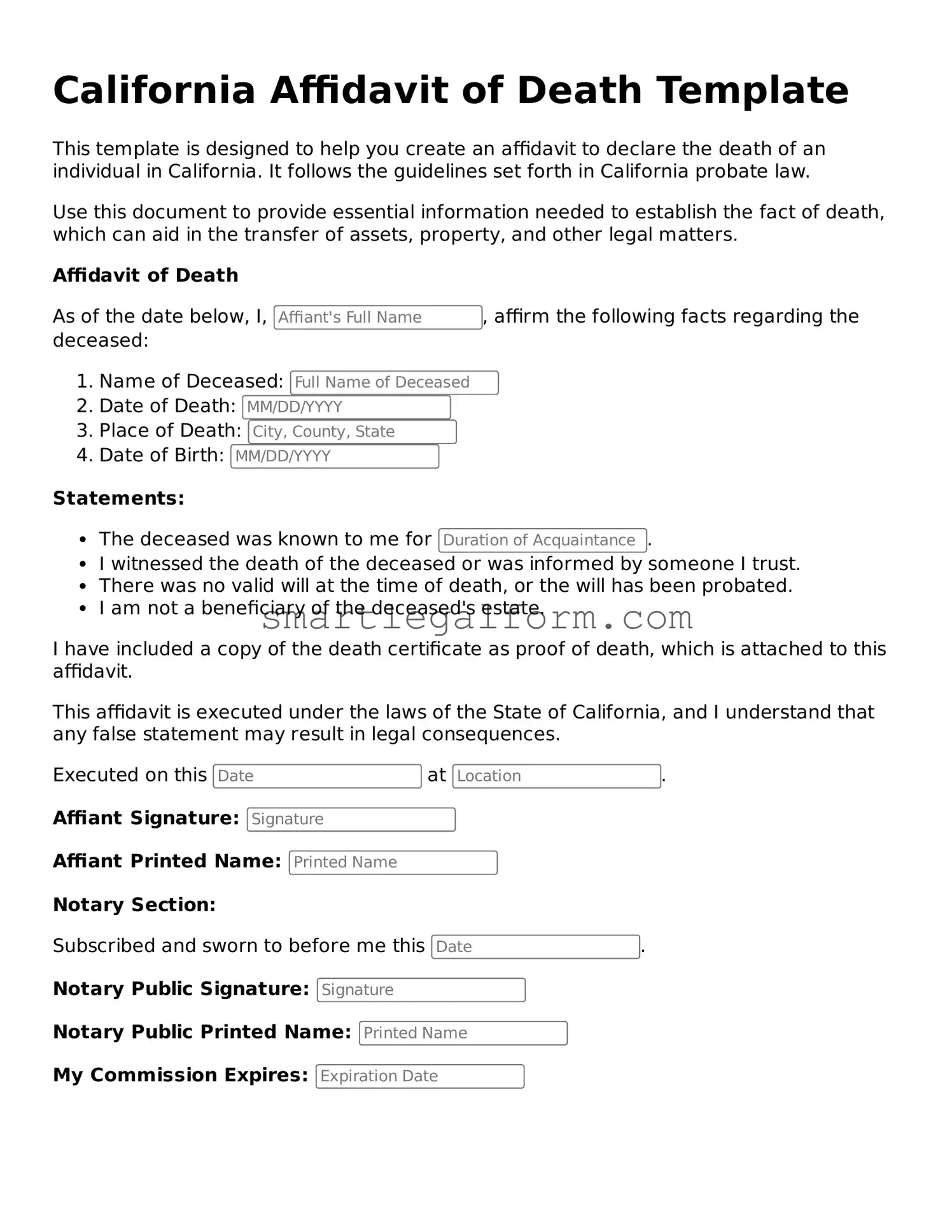Printable California Affidavit of Death Document
The California Affidavit of Death form is a legal document used to officially declare the passing of an individual. This form is essential for settling estates, transferring property, and addressing various legal matters following a death. Understanding how to properly complete this form can help streamline the process during a difficult time.
Ready to fill out the California Affidavit of Death form? Click the button below to get started!
Fill Out Your Form Online
